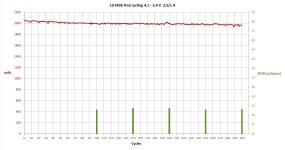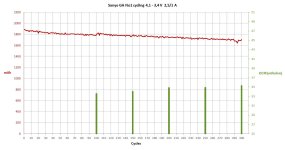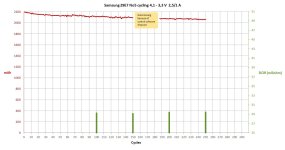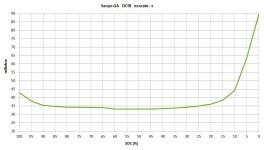eMark
100 kW
Considerating Hillhater's GA post on your 14S Thread another test isn't necessary by docware as also supported by Pajda. Hillhater's following comment supports docware's exacting cycle ageing research test (GA graph) ..."https://endless-sphere.com/forums/download/file.php?id=261802" ...Jan-Erik-86 said:Simply the fact that you ask this about the GA, makes it clear that it needs to be tested by more people, yes.
On a positive note from the looks of docware's M36 graph, Erik is smiling with his final choice of M36 for his 14S Vruzend pack. :thumb:Hillhater said:I have packs of GA cells 10s, 4P, and have no problems or complaints.
.. But, i do not run much more than 2C, and i am not a daily user/ charger , so no experience with cycle life etc.
However, i have seen comments on this forum from other GA users who have reported poor cycle life with heavy use.
Docware, Pajda and others are providing a significant contribution to this ES ebiking Battery forum ...docware said:Pajda, I know that you are very experienced in this area, therefore I assumed that maybe you know something more, than you want or can share. I know you as a realistic guy who after all these experiences trust only verified facts. Also understand your Panasonic PD argument, however, exist any study on any cell which has different conclusions on calendar ageing ?
I agree that each cell is different and also probably can have different calendar ageing characteristics, just wanted to remind that there is another aspect of ageing except cycle ageing. We just miss more reports on various cells.
Pajda said:The cycle life test results of GA measured by docware are valid. I got the similar results on more than dozen samples from different batches. So if you do not believe them, why are you asking for other cell test results?
Happy Trails and Holidays to all,
eMark







